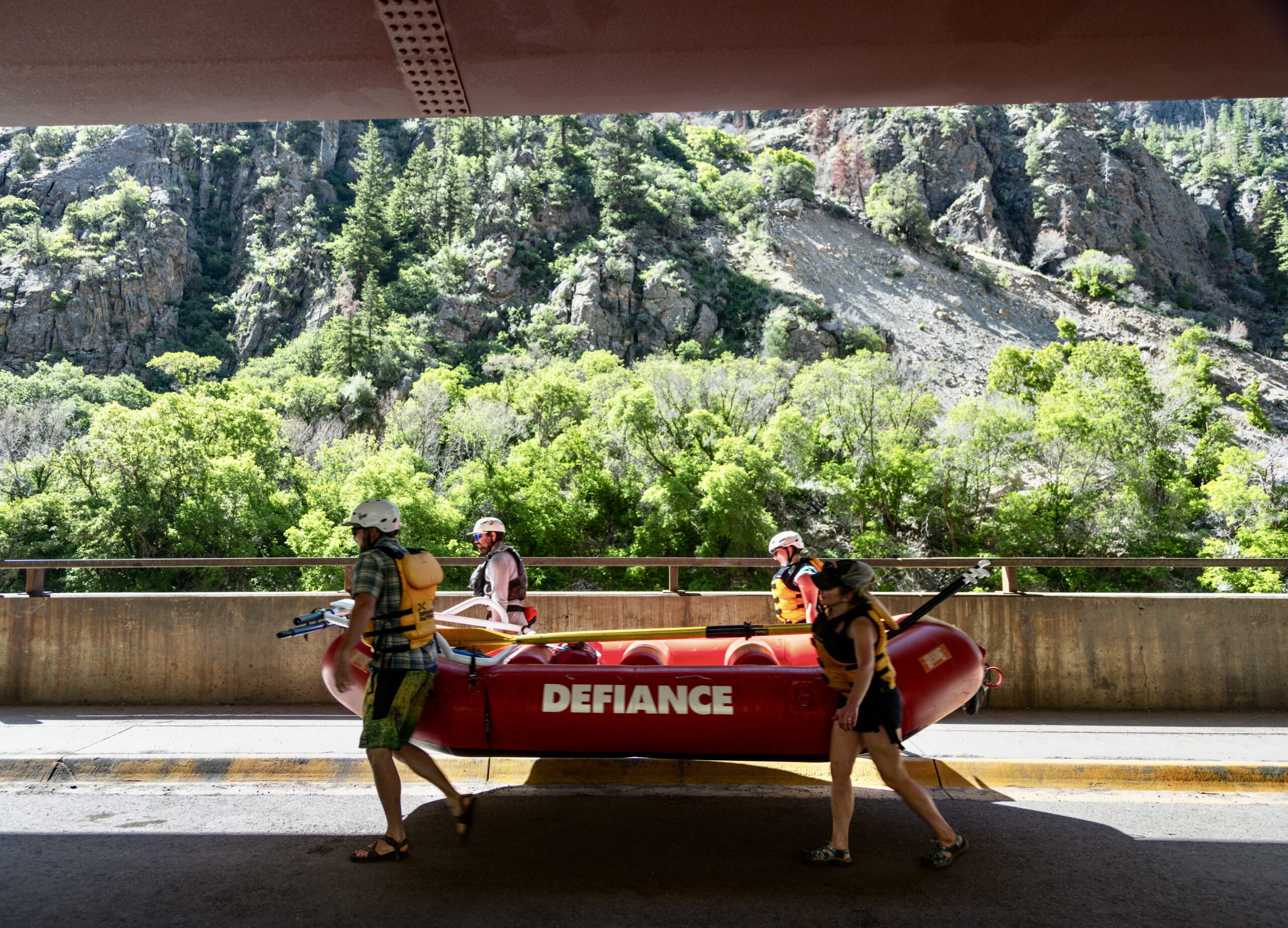
Whitewater rafting can be an exhilarating adventure. And with its accessibility, it’s an activity that attracts thrill-seekers from all walks of life. However, not all rapids are created equal. Understanding whitewater ratings is important to ensuring you and your crew are set up for success and have a great time on the river. This guide explains the International Scale of River Difficulty, making it easier to choose the proper river, section of river, and time of year for your skill level and prepare for an unforgettable experience.
The International Scale of River Difficulty
The International Scale of River Difficulty is a standardized system used to classify rivers based on the challenges they present to paddlers. This scale ranges from Class I to Class VI, with Class I being the easiest and Class VI representing extreme, expert-level conditions. Below is a breakdown of each class:
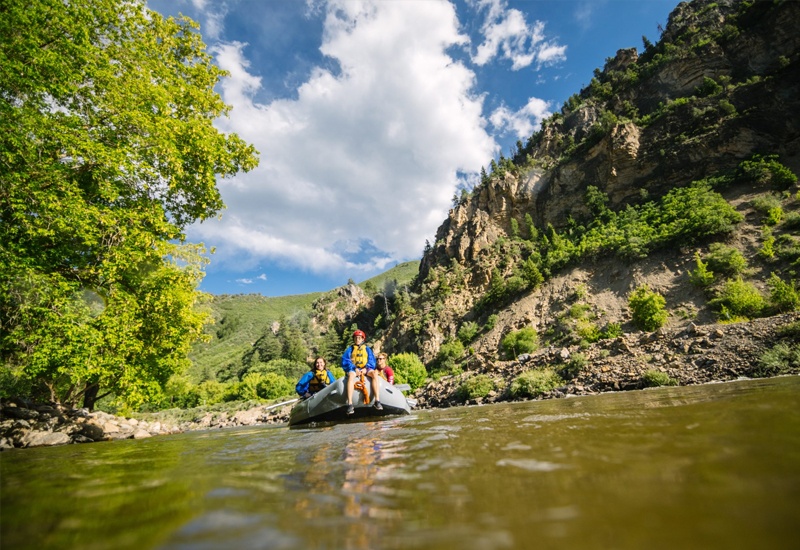
Class I: Easy
Description: Moving water with small waves, but no significant obstacles. This class is perfect for families and beginners.
Skills Required: Basic paddling skills (often paddling is not required); no previous experience is necessary. Ideal for beginners.
Example Rivers: Lazy rivers or gentle stretches of streams. A local example in Glenwood Springs is the section of the Colorado River below the Shoshone Rapids during late summer and early fall. Check out Defiance’s mixed Class I and Class II Scenic Canyon Half-Day Float if this is more your speed. This classification falls in Defiance’s “Beginner” and “Family-Friendly” categories.
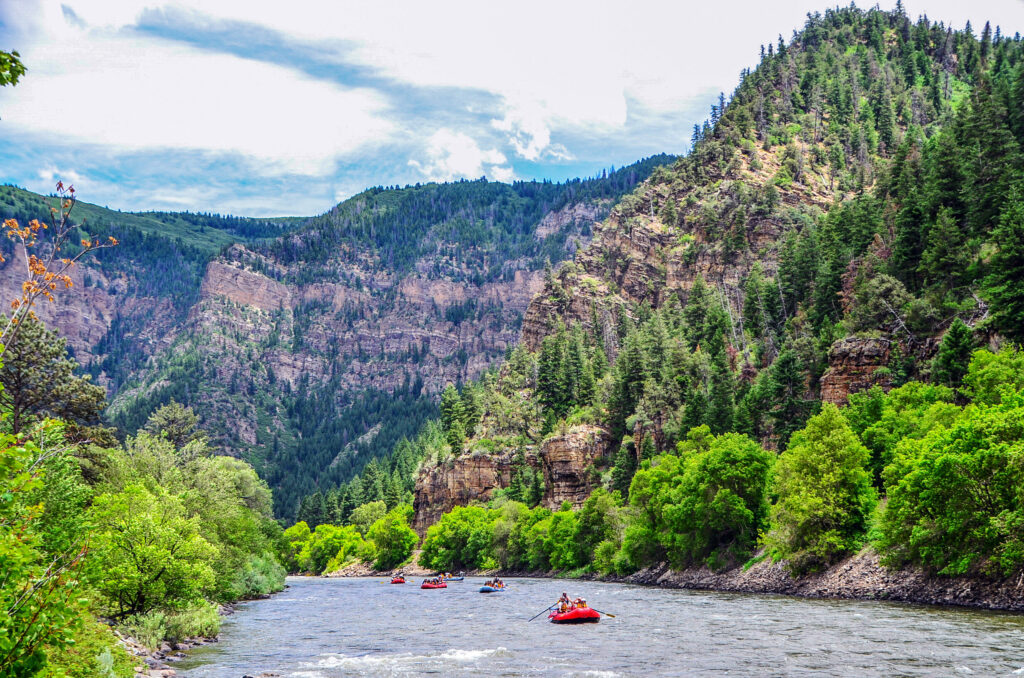
Class II: Novice
Description: This class features mild currents, occasional small waves, and some obstacles like rocks or fallen trees that can be easily avoided.
Skills Required: Basic paddling skills, ability to maneuver around obstacles, and some familiarity with rafting. Like Class I, raft trips on Class II water are usually appropriate for first-time rafters and those wanting a bit of splash but without the intensity Class III whitewater trips may bring.
Example Rivers: The Colorado River in certain sections near Glenwood Springs below the Shoshone Rapids. The Roaring Fork River below Carbondale. Take a look at our Scenic Canyon Half-Day or Roaring Fork Half-Day trips.
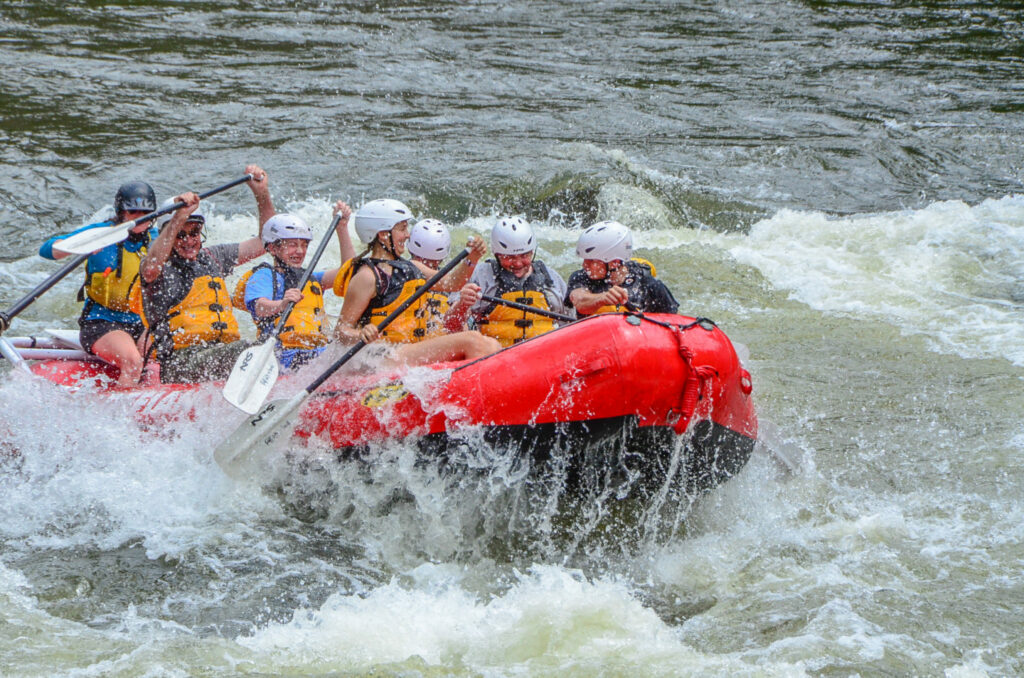
Class III: Intermediate
Description: Moderate, irregular waves, requiring precise maneuvering and some quick decisions. Strong currents may be present, and larger obstacles like waves, rocks, and eddies are common.
Skills Required: Competent paddling skills, ability to read the river, and the ability to self-rescue. There’s a significant difference between Class II water and Class III water. During lower flows some Class III trips may be appropriate for first-time rafters, especially those wanting to experience big whitewater. Defiance classifies its trips on Class III as “Beginner+” to “Intermediate,” depending on water level.
Example Rivers: The Arkansas River around Buena Vista in central Colorado. The Shoshone Rapids section of the Colorado River in Glenwood Canyon. Defiance Rafting’s Glenwood Canyon Half-Day and Double Shoshone Rapids Half-Day trips are examples of Class III whitewater.
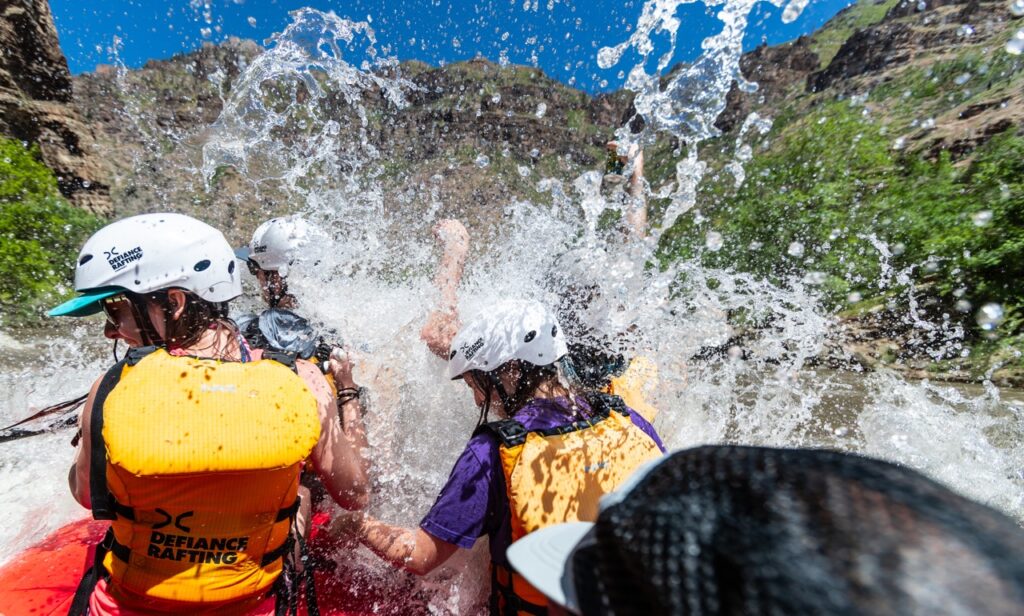
Class IV: Advanced
Description: Intense, powerful rapids with large and turbulent waves. Expect significant drops and the potential for hazardous obstacles.
Skills Required: Strong paddling skills, experience in difficult conditions, and the ability to make split-second decisions.
Example Rivers: The Numbers section of the Arkansas River. Much of Clear Creek on the Front Range of Colorado. The Shoshone Rapids section on the Colorado River during higher water levels.
Class V: Expert
Description: Extremely difficult rapids that are often long, with turbulent water, technical maneuvers, and severe hazards. Class V requires expert-level skills and experience.
Skills Required: Highly proficient rafting skills, comfort with the conditions, and experience on Class IV rapids or higher.
Example Rivers: The Pine Creek section of the Arkansas River and the Gore Canyon section of the Colorado River.
Class VI: Extreme
Description: Uncharted and extremely dangerous rapids. This class is for professional paddlers only, with risks of significant injury or death. Once a Class VI section is successfully navigaged it is considered a Class V section.
Skills Required: Expert-level skills and experience on multiple Class V rivers. Participants must have a deep understanding of risk management. Example Rivers: Certain unrun rivers or specif
Why Understanding Ratings Matters
Safety
Understanding whitewater ratings is essential for safety. Choosing a river or section of river that matches your skill level minimizes risks and enhances your enjoyment. Overestimating your abilities can lead to dangerous situations, injuries, or even drownings. By knowing the classifications, you can better assess the challenges and prepare accordingly.
Group Dynamics
When rafting with a group, it’s important to ensure that everyone has an appropriate level of skill. A Class IV river may be too challenging for beginners, leading to anxiety, increased stress, and increase the risk for accidents. Being aware of the ratings allows you to make informed decisions about group trips, enhancing the experience for everyone involved.
Progressive Learning
Whitewater ratings provide a path for progression in skill level. Paddlers can aim to gradually tackle higher classes as they gain experience. Starting with easier sections of whitewater helps develop skills and gain experience that are crucial for taking on more difficult classes of whitewater.
Tips for Choosing the Right River Section of River to Raft
1. Know Your Current Skill and Experience Level: Before selecting a river, take an honest assessment of your abilities and experience. Give a local river outfitter a call if you’re unsure and they can help steer you to an experience that provides the best fit.
2. Research the River Conditions: Consider the season, weather, and water levels. A river rated Class III during normal flows may become Class IV during high water conditions. The Shoshone Rapids in Glenwood Canyon is an example of this.
3. Seek Professional Guidance: If you’re new to rafting or attempting a river with a rating above your current level, consider hiring a guide or going with an experienced group.
4. Communicate with Your Group: If traveling with a group, discuss everyone’s experience and comfort levels before embarking on a trip. Ensure all participants are on the same page regarding the challenges ahead.
Conclusion
Understanding whitewater ratings is critical to ensuring a safe and enjoyable rafting experience. By familiarizing yourself with the International Scale of River Difficulty, you can assess your skills, select appropriate rivers, and prepare for adventure responsibly. Whether you’re a beginner eager to explore tranquil waters or pursuing white-knuckle thrills, familiarizing yourself with whitewater ratings empowers you to navigate the thrilling world of rafting safely and confidently. So gear up, gather your crew, and get ready for an unforgettable experience on the river!




